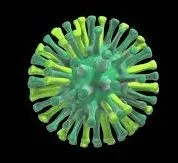Is New Zealand Ready for the Potential Arrival of H5N1?

Synopsis
As New Zealand gears up for the potential threat of the H5N1 avian influenza, the government emphasizes the critical role of collaboration with the poultry industry. This proactive strategy aims to ensure effective containment and eradication of potential outbreaks, safeguarding both public health and agricultural integrity.
Key Takeaways
- New Zealand is enhancing its biosecurity to prepare for potential H5N1 outbreaks.
- Collaboration with the poultry industry is crucial for effective disease management.
- The recent H7N6 outbreak tested New Zealand's response plans.
- Geographic isolation has helped protect New Zealand from H5N1.
- Human cases of H5N1 are rare and linked to close contact with infected birds.
Wellington, April 28 (NationPress) The New Zealand government is intensifying its readiness for the potential introduction of the H5N1 strain of avian influenza, highlighting the necessity of a cooperative strategy to combat high pathogenic avian influenza (HPAI).
Biosecurity Minister Andrew Hoggard stated on Monday that collaboration with the industry is vital for the effective eradication of HPAI at a significant commercial egg farm in Otago, located in the South Island. The recent outbreak involved the less dangerous H7N6 strain.
"This marks the first detection of HPAI within New Zealand, testing several strategies being formulated for the arrival of HPAI H5N1," Hoggard remarked.
The Ministry for Primary Industries has now removed stringent biosecurity regulations at Mainland Poultry's Hillgrove Farm, which had been enforced since the confirmation of the H7N6 strain there last December, enabling the farm to start repopulating.
"Tracing did not reveal any HPAI-infected chickens beyond the origin farm," Hoggard observed. He attributed the rapid containment and eradication of the disease to a targeted response and robust support from the broader poultry industry.
According to him, New Zealand's strong biosecurity framework and its general immunity from pests and diseases are significant advantages for local farmers.
Hoggard also mentioned that the preparations for a possible H5N1 outbreak, which has led to millions of bird fatalities globally, equipped New Zealand to respond effectively to the less severe H7N6 case, as reported by the Xinhua news agency.
"Our geographical seclusion has shielded us from H5N1 so far, but we cannot afford to be complacent," he cautioned.
The World Health Organization states that Avian influenza A(H5N1) is a subtype of influenza virus that affects birds and mammals, including humans in rare instances. The goose/Guangdong-lineage of H5N1 avian influenza viruses first appeared in 1996 and has been causing outbreaks in birds since that time.
Since 2020, a variant of these viruses from the H5 clade 2.3.4.4b has resulted in an unprecedented number of deaths among wild birds and poultry in various countries across Africa, Asia, and Europe. In 2021, the virus reached North America, and in 2022, it spread to Central and South America.
Human infections can lead to severe disease with a high mortality rate. Most human cases reported to date are associated with close contact with infected birds and contaminated environments. This virus does not seem to transmit easily between people, and sustained human-to-human transmission has not been documented.









